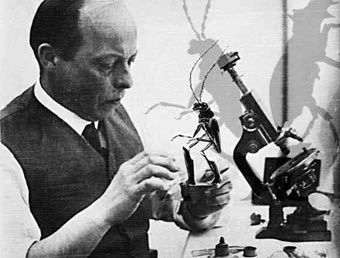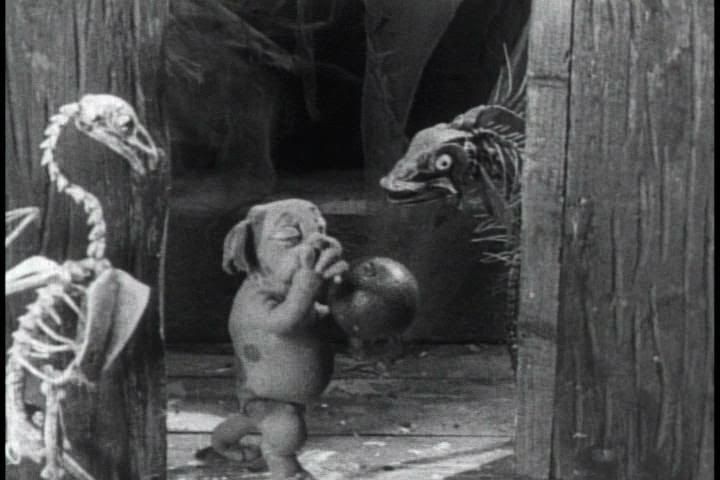 |
| FIG.1 |
Ladislaw Starewicz was a Russian stop-motion animator who mainly used insects and other animals as protagonists in his films. His wonderously creepy fables were born out of his dual obsessions with photography and entomology. From a very young age he showed his interest in insects and all the beings in general when he was named the Director of The Museum of Natural History in Konvo, Lithuania. He later moved to Moscow where he made two dozen films using dead animals as puppets. "Starewicz was a pioneer in the field of animation, using stop-motion to give life to puppets, insects, animal skeletons and dolls in his fantastically creative little shorts. Just like Švankmajer, he seems to revel in creating a kind of dark, shimmering dreamworld, where toys can come to life and dance in the devil's ball, or philandering insects are caught on tape in their mistresses' pincers." (Good.2010)
 |
| FIG.2 |
A very early example of pixilation by the hard- working pioneer is The CameraMan's Revenge(1912)(FIG.2). Using flexible insect figures Starewicz proved to be way ahead of his time with this pack of amusing detail while Winsor McCay just started and Walt Disney was still in Grade School! The film features real insects like grasshoppers, beatles, dragonflies and even a frog. "The impressive animation alone would make this more than worthwhile, and the amusing story alone would make entertaining viewing for any fan of silent comedies. The two together make "The Cameraman's Revenge" a delightful classic that looks much better than practically anything made by the computerized studios of the present time." (Snow Leopard.2004)
 |
| FIG.4: The Mascot (1933) |
Perhaps his most touching long film is Mascot(1933) a story of a stuffed dog lost in the streets of Paris trying to find its way home. Through its journey it faces up with skeletons, animals and even the devil himself who wants to destroy its plans. It is very interesting to observe all the different textures of the models throughout the film. It is obvious how much effort has been put into the models and the setting. The characters could be described as the Tim Burton characters of the 1930's as they share the sam style and mood of the famous modern animator.
In conclusion, Starewicz is an under appreciated figure in film, and more specifically, animation history.Despite his influence on many of today's animators, which is seen in such films as Henry Selick's "James & the Giant Peach," Starewicz is under-recognized today because many of his films were considered lost, and those which exist are rarely screened. However, his work is remarkable and has a great number of qualities which is definitely worth watching.
Bibliography
Good, Ansdrew(2010)
"Ladislaw Starewicz gives me more reason to love Eastern European art" At:
http://underdeadline.blogspot.com/2010/05/ladislaw-starewicz-gives-me-more-reason.html (accessed on 20/3/2011)
Snow Leopard(2004) Review on Strewicz At: http://www.imdb.com/title/tt0001527/usercomments (accessed on 20/3/2011)List of Illustrations
FIG.1: L.Starewicz At: http://underdeadline.blogspot.com/2010/05/ladislaw-starewicz-gives-me-more-reason.html (accessed on 20/3/2011)
FIG.2: Beatles used in animation At: http://uuiuu.net/mafia-hunt/?p=3107 (accessed on 20/3/2011)
FIG.3: The Mascot (1933) At: http://fan.tcm.com/_Fetiche-Mascotte-The-Mascot-Ladislaw-Starewicz-1933/PHOTO/9454514/66470.html?createPassive=true (accessed on 20/3/2011)

No comments:
Post a Comment